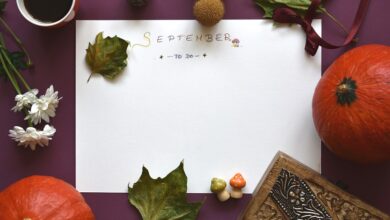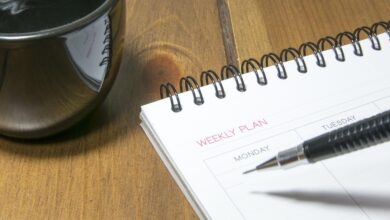
How a Planner Can Help You Stay Creative and Inspired
In an age dominated by distractions and ever-increasing responsibilities, maintaining creativity can often feel like a daunting challenge. However, one of the most underrated tools in boosting creativity and inspiration is a planner. A planner is not just a simple tool for tracking appointments; it serves as a canvas for thoughts, a space to explore ideas, and a structure for creative processes. This article delves into the multifaceted ways a planner can join the league of your creative allies.
1. Organising Thoughts
The act of journaling or writing down ideas has a significant impact on the way we think. When you jot down thoughts and concepts in a planner, you create an external repository for your mind. This eliminates mental clutter and allows you to channel your energy toward brainstorming and developing your ideas rather than merely trying to remember them.
By regularly dedicating time to vomit your thoughts onto paper, even the simplest ideas can evolve into innovative projects. The act of writing forces you to articulate your thoughts clearly, making it easier to spot connections between different concepts.
2. Setting Creative Goals
A planner allows you to set specific, measurable, attainable, relevant, and time-bound (SMART) goals for your creative endeavours. By defining what you want to achieve, such as completing a novel, developing a new art piece, or launching a blog, you introduce concrete milestones into your creative journey. These goals transform abstract desires into actionable plans.
Moreover, when you can track your progress, each tick next to a completed task boosts both motivation and confidence. This sense of accomplishment fuels further creativity, making it essential to celebrate small milestones. Even if you only complete a chapter of your book or finish a sketch, recognising these achievements can inspire you to take the next step.
3. Scheduling Creative Time
All too often, the hustle and bustle of daily life can drown out your creative impulses. A planner facilitates the scheduling of dedicated creative time, ensuring that your creativity doesn’t get sidelined. Setting aside specific time slots to engage in your creative passion, whether writing, painting, or even brainstorming business ideas, creates a routine that nurtures creativity.
When you assign time for creativity, you begin to treat it as a priority rather than merely a pastime. Over time, this creates a habit, and habitual creativity can foster a prolific flow of ideas. The planner becomes your commitment device, reminding you to reconnect with your creative self regularly.
4. Incorporating Inspiration Sources
Creativity flourishes when exposed to various stimuli, and a planner can be an ideal place to compile inspiration sources. Whether it’s quotes, snippets from books, poems, artwork, or even items of nature that spark your interest, having a dedicated section in your planner to collect these inspirations can be invaluable.
Not only does this collection serve as a wellspring of motivation, but it also becomes a reference point when you feel creatively blocked. On days when ideas seem few and far between, flipping through your inspiration section can reignite your passion and lead to new insights.
5. Reflecting on Creative Progress
Reflection is a vital component of the creative process. A planner can act as a journal where you document your creative journey, examining what worked and what didn’t. By setting aside time for reflection, perhaps at the end of each week or month, you can evaluate your creative output and assess your progress in achieving your goals.
This reflection helps you identify patterns in your creativity—what times of day you feel most inspired or which environments stimulate your imagination. It can also highlight areas where improvements could be made, enabling you to tailor your creative process for maximum effectiveness.
6. Brainstorming and Idea Mapping
Planners, with their blank pages and structured layouts, are perfect for brainstorming ideas and mapping out new concepts. By employing brainstorming exercises or mind mapping within your planner, you create a visual representation of your thoughts, making it easier to expand on ideas and see connections between them.
Incorporating various techniques, such as bullet points, flowcharts, or even doodles, can foster a more dynamic brainstorming session. Creating a visual map of your thoughts not only enhances creativity but also allows for greater flexibility in how you approach your projects.
7. Hosting Creative Challenges
Another fantastic feature of planners is the ability to create challenges for yourself. You can organise creative prompts or tasks that push you out of your comfort zone. For example, set a personal challenge to write a poem every day for a week or draw a sketch of something new each day.
These challenges can be not only fun but also incredibly rewarding. They force you to confront your creative limits and explore new avenues. Writing your challenges down in your planner formalises the commitment and adds an element of accountability, enhancing your likelihood of completing them.
8. The Power of Visualisation
Visualisation is another compelling technique that can be aided by a planner. A planner can be adorned with pictures, colour coding, stickers, or drawings that reflect your creative aspirations. Imagining your goals visually can make them feel more tangible and encourages the creative journey.
You might create a vision board section within your planner or visually map out your year’s creative projects, showing the progression of your ideas. By surrounding yourself with visual reminders of your goals, you can keep your creative spirit high and focused.
9. Creating a Sense of Community
A planner also plays an essential role in fostering community engagement. By incorporating networking events, workshops, or creative meet-ups into your scheduling, you can actively seek out collaboration opportunities.
Being part of a community of like-minded individuals can provide new insights, constructive feedback, and inspiration. Writing down these engagements in your planner solidifies your commitment to being part of a creative network, thus encouraging your creative growth.
10. Reducing Overwhelm
Finally, amid the chaos of creative work, a planner serves as a calming force. When faced with multiple projects and deadlines, it’s easy to feel overwhelmed. A planner allows you to break down larger tasks into manageable steps.
By carefully mapping out what needs to be done, from brainstorming sessions to final drafts, you can reduce the weight of looming deadlines. This method of breaking tasks into smaller, achievable parts not only makes the creative process feel less daunting but also allows for incremental progress, thereby sustaining creativity.
Conclusion
In the fast-paced world we inhabit, nurturing creativity can sometimes seem like an uphill battle. However, utilising a planner can transform the way you approach your creative endeavors. By offering a structure for thought, goal-setting, and reflection, a planner acts as a catalyst for inspiration and creativity. The key lies in treating your planner not merely as a tool for organisation but as an extension of your creative self—an ally in your journey towards dynamic self-expression.
By dedicating time to establishing a creative routine, setting goals, gathering inspiration, and reflecting on your progress, you can construct a robust framework that nurtures your creativity. So, pick up your planner, and let it be a fertile ground for your most imaginative thoughts and ideas. Your creative potential awaits, ready to be unfurled page by page.





